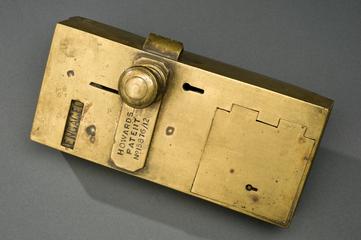
Yellow sticky labels, for use by laboratory workers
- Made:
- circa 2014-15 in unknown place
Three sheets of yellow sticky labels, for use by laboratory workers in the 'diagnostic tent' at the Manteneh Ebola Treatment Centre during the Ebola outbreak in Sierra Leone, 2014-2015
Labelling items in a laboratory is important so everyone who comes into contact with them knows what they are handling. These yellow labels, with the letters AVL +C are likely to indicate that a sample had been treated with a buffer solution in steps to make it safe for healthcare workers to test. Confirmation of Ebola is through laboratory and blood tests. As the virus is spread through contact with the body, blood, body fluids of someone with Ebola or the equipment used to treat and diagnose them, extreme caution is needed to prevent its spread. Anyone with symptoms is quickly quarantined, until tests can be carried out.
Set up by the International Medical Corps the Manteneh Ebola Treatment Centre in Makeni included frontline interactions with suspected or confirmed cases, the daily diagnostic procedures as samples were tested through to the administrative elements of certification and the role of health awareness materials.
The West African epidemic of Ebola that began in 2014 was the most widespread outbreak of the virus disease in history—causing major loss of life and disruption to society and the economy, mainly in the countries of Guinea, Liberia, and Sierra Leone. It became international news and prompted an international medical response. In June 2016 when Guinea was the last country to be declared free of Ebola, there were more than 28,000 cases and more than 11,000 deaths. Since 2021, a vaccine has been available to protect high-risk populations and frontline workers.
Details
- Category:
- Public Health & Hygiene
- Object Number:
- 2020-87
- Measurements:
-
overall: 297 mm x 210 mm
- type:
- label




